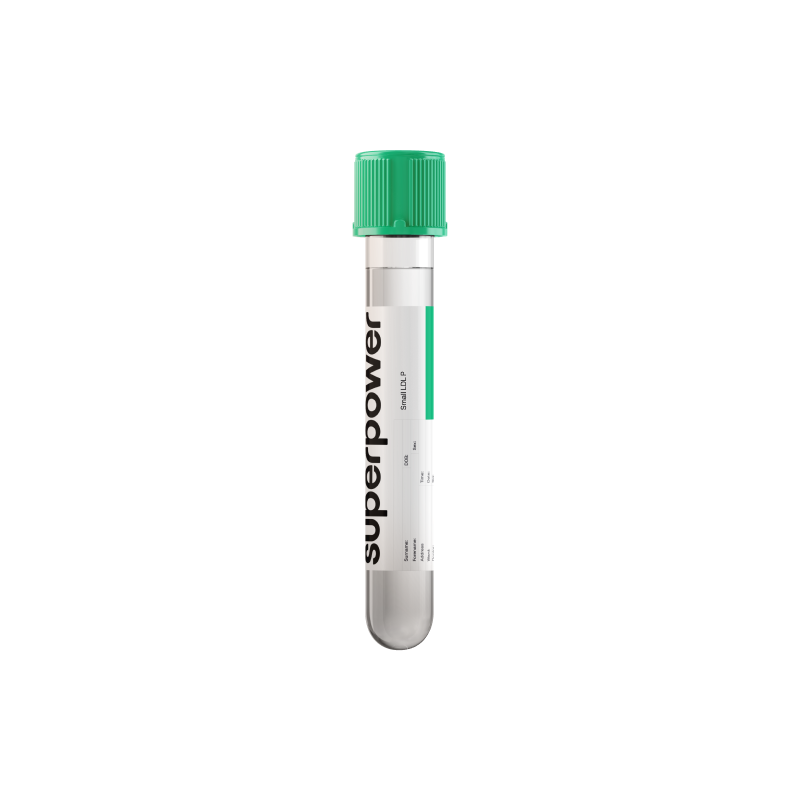Small LDL-P reveals when particle number and type—not cholesterol mass—drive atherosclerosis. It highlights hidden cardiometabolic risk, ties closely to insulin resistance, and guides targeted lifestyle and treatment decisions.
Key Benefits
- Spot artery-clogging particles by counting small LDL, a riskier LDL subtype.
- Flag hidden risk when LDL cholesterol looks normal by revealing extra small particles.
- Clarify metabolic health by linking small LDL with insulin resistance and metabolic syndrome.
- Guide targeted lifestyle changes that reduce small LDL: fewer refined carbs, weight loss, exercise.
- Support medication decisions when risk is borderline by showing persistent small LDL elevation.
- Track treatment response by watching small LDL fall with triglyceride and apoB lowering.
- Explain high triglycerides and low HDL by confirming a small-particle, insulin-resistant pattern.
- Best interpreted with apoB, LDL-C, triglycerides, and your overall cardiovascular risk.
What is Small LDL P?
Small LDL P is the number of small LDL particles circulating in your blood. LDL particles are tiny fat-and-protein carriers that originate in the liver. The liver releases very-low-density lipoproteins (VLDL), which are trimmed by enzymes as they circulate, becoming LDL. When LDL particles lose more triglyceride and are remodeled by lipid-transfer and lipase enzymes, they become smaller and denser (small, dense LDL; sdLDL). Each LDL particle contains one apolipoprotein B-100 (apoB-100), so Small LDL P counts how many of these sdLDL particles are present, not how much cholesterol they carry.
Small LDL particles still deliver cholesterol to tissues, but their size and composition change how they behave. They more readily enter the artery wall, are cleared less efficiently by LDL receptors, and are more prone to chemical modification (oxidation). Small LDL P therefore reflects the burden of LDL particles with these properties and the underlying pattern of lipoprotein remodeling driven by triglyceride exchange and lipase action (cholesteryl ester transfer protein, CETP, and hepatic lipase). Because it counts particles, Small LDL P captures the traffic of small LDL in circulation, complementing traditional cholesterol measures that focus on the cargo.
Why is Small LDL P important?
Small LDL-P counts the number of small, dense LDL particles in circulation. These particles more readily enter artery walls, oxidize, and ignite inflammation, so they connect heart and brain health with insulin signaling, liver fat handling, and the state of your blood vessels.
Reference ranges vary by lab, but optimal values sit toward the low end. When values are low, LDL is dominated by larger, more buoyant particles—usually a sign of good insulin sensitivity, efficient hepatic triglyceride handling, and quieter vascular inflammation. This pattern is asymptomatic and is more common in women before menopause and in normal‑weight children.
When values are high, they point to an atherogenic, insulin‑resistant pattern: higher triglycerides, lower HDL, and often a higher burden of apoB‑containing particles that can lodge in arterial walls. It is usually silent yet tracks with central adiposity, elevated glucose, fatty liver, and higher blood pressure, raising risk for coronary disease and stroke. High levels are more frequent in men, increase after menopause, can appear in teens with obesity, may rise in pregnancy—especially with gestational diabetes—and are seen with kidney disease or hypothyroidism.
Big picture: Small LDL-P integrates liver lipid export, adipose insulin action, endothelial function, and immune oxidation. It complements LDL-C and apoB/LDL-P by flagging a particularly plaque‑prone particle profile; persistently high levels are linked to faster atherosclerosis and adverse cardiovascular events.
What Insights Will I Get?
What Small LDL-P tells you
Small LDL-P measures the number of low-density lipoprotein particles in the smaller, denser size range. These particles circulate longer, more easily enter artery walls, and are more prone to oxidation and glycation. The marker integrates liver lipid handling, insulin signaling, and vascular risk, linking energy metabolism to cardiovascular, cognitive, and renal health.
Low values usually reflect a lipid pattern dominated by larger, buoyant LDL and/or a low overall LDL particle burden. This points to efficient hepatic LDL-receptor clearance, lower triglyceride exchange between lipoproteins, and insulin-sensitive metabolism. Children and premenopausal women tend to have lower small LDL-P.
Being in range suggests stable coupling between glucose and lipid pathways, adequate LDL clearance, and a neutral vascular milieu. Consensus leans toward the lower end of the reference range being most favorable, provided total LDL-P is not elevated.
High values usually reflect a triglyceride-rich, insulin-resistant state with hepatic VLDL overproduction and cholesterol–triglyceride exchange that remodels LDL into smaller, denser particles. This pattern (often called “pattern B”) is linked to metabolic syndrome, type 2 diabetes, fatty liver, chronic kidney disease, and too little thyroid hormone (hypothyroidism). Levels tend to rise with age and after menopause; they may increase in late pregnancy.
Notes: Interpretation is influenced by fasting status (postprandial triglycerides can transiently raise small LDL-P), acute illness, thyroid and kidney function, and medications that alter triglycerides or LDL-receptor activity. Different analytical methods (NMR vs other assays) yield non-identical results; compare values within the same lab.



.svg)



.png)
.png)
.png)
.png)








